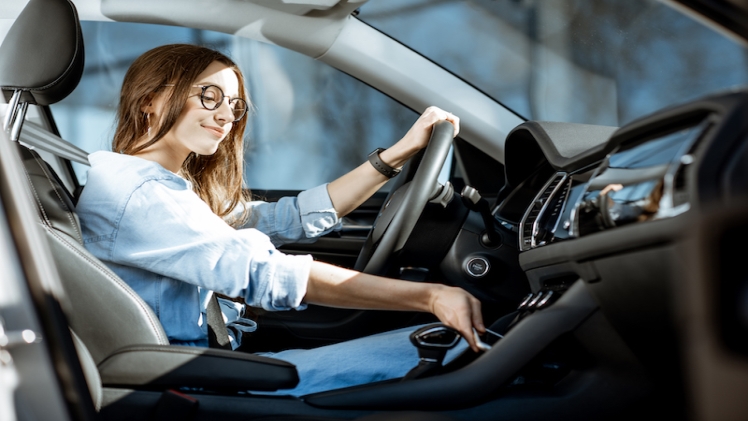When it comes to purchasing a new car, safety should be your foremost concern. Modern vehicles are equipped with a myriad of advanced safety features designed to prevent accidents and protect passengers. In this comprehensive guide, we will walk you through the most important safety features to consider when buying a new car. From advanced driver assistance systems to structural enhancements, these features are crucial for reducing the risk of accidents and ensuring a safe journey for you and your loved ones. So, fasten your seatbelt, and let’s explore the cutting-edge technologies that make today’s cars safer than ever.
Forward Collision Warning (FCW) with Autonomous Emergency Braking (AEB)
Forward Collision Warning (FCW) with Autonomous Emergency Braking (AEB) is a game-changer in accident prevention. This system uses sensors and cameras to monitor the road ahead for potential auto collisions causing injuries. When it detects an impending impact, it alerts the driver with visual and audible warnings. If the driver doesn’t react in time, AEB can automatically apply the brakes to prevent or mitigate the collision. FCW with AEB is particularly effective in rear-end collisions and can make the difference between a close call and a dangerous crash.
Lane Departure Warning (LDW) and Lane Keeping Assist (LKA)
Lane Departure Warning (LDW) and Lane Keeping Assist (LKA) are essential for highway safety. LDW alerts you if your vehicle drifts out of its lane without signaling. LKA, on the other hand, actively helps you stay in your lane by gently steering the car back into position. These features not only prevent unintended lane changes but also combat drowsy or distracted driving, reducing the risk of side-impact collisions and off-road accidents.
Adaptive Cruise Control (ACC)
Adaptive Cruise Control (ACC) takes traditional cruise control to the next level. This system automatically adjusts your car’s speed to maintain a safe following distance from the vehicle ahead. ACC uses sensors to monitor traffic conditions and can bring your car to a complete stop if necessary. It not only reduces the stress of highway driving but also helps prevent rear-end collisions in stop-and-go traffic.
Blind Spot Monitoring (BSM)
Blind Spot Monitoring (BSM) is a lifesaver when changing lanes. This system uses sensors to detect vehicles in your blind spots and provides visual or audible alerts when it’s unsafe to merge. BSM is particularly valuable in preventing side-impact collisions and is an indispensable feature for highway driving.
Rear-View Camera and Surround-View Camera
A clear view of your surroundings is paramount for accident prevention. A rear-view camera displays what’s behind you when you’re in reverse, preventing accidents when backing up. Some cars go further with a surround-view camera system, providing a bird’s-eye view of your car and its surroundings. This technology is indispensable for parking in tight spots and avoiding collisions with pedestrians and objects.
Pedestrian Detection and Protection
Pedestrian Detection is a feature that identifies pedestrians in or near the road and can apply the brakes to avoid or lessen the severity of a collision. This feature is not only essential for pedestrian safety but also helps prevent accidents in urban environments and crowded streets. Some advanced systems even include pedestrian airbags to reduce injury in the event of a collision.
Rear Cross-Traffic Alert (RCTA)
Backing out of parking spaces can be risky due to limited visibility. Rear Cross-Traffic Alert (RCTA) warns you of approaching vehicles or pedestrians when you’re in reverse. This feature is a valuable addition to your car’s safety arsenal, especially in busy parking lots where surprises can happen.
Electronic Stability Control (ESC)
Electronic Stability Control (ESC) is a fundamental safety feature that helps you maintain control of your car during sudden maneuvers or slippery road conditions. It automatically applies brakes to individual wheels and adjusts engine power to prevent skidding and loss of control. ESC is particularly effective in reducing rollovers and single-vehicle accidents.
Advanced Structural Design and Airbags
While advanced safety features are crucial, a well-built vehicle with a robust structural design is the foundation of accident prevention. Look for cars with high safety ratings and crash test scores. Additionally, a comprehensive airbag system, including side-curtain airbags and knee airbags, can significantly reduce the risk of injury in the event of a collision.
Traction Control System (TCS)
Traction Control System (TCS) prevents wheel spin during acceleration by reducing engine power or applying the brakes to individual wheels. This feature is vital for maintaining control on slippery or uneven surfaces, such as wet roads or gravel. TCS plays a pivotal role in preventing accidents related to loss of traction.
As you embark on the exciting journey of acquiring a new car, it’s paramount to engrain safety as your foremost consideration. The advanced safety technologies and systems discussed in this guide are not merely optional add-ons but the linchpin of your vehicle’s ability to shield you from harm and prevent accidents. By meticulously evaluating and selecting a car equipped with these essential safety features, you are making an investment not only in your well-being but also in fostering safer roads for all. These technologies serve as a tangible testament to the progress we’ve made in enhancing automotive safety and reducing the toll of accidents on our highways.
However, it’s vital to remember that while these features are groundbreaking, they are not a substitute for responsible and attentive driving. Your role as a vigilant and cautious driver remains the bedrock of road safety. The synergy between advanced safety features and responsible driving habits is the ultimate formula for accident prevention. So, as you embark on your automotive journey, consider this comprehensive guide not just as a roadmap to safer driving but as an enduring commitment to protect yourself, your passengers, and your fellow road users. Invest in safety, fasten your seatbelt, and take the wheel with confidence, knowing that you’ve equipped your car with the cutting-edge tools to keep you secure on the ever-evolving roadways of life.

